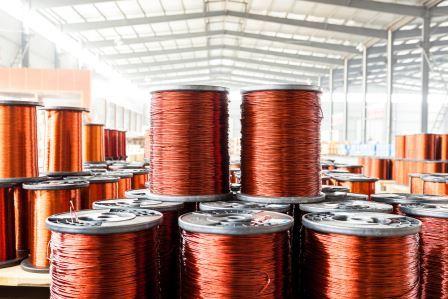Despite global copper markets experiencing tough fundamentals, the metal is poised to close trading this year with a mild positive bias. The global energy crisis intensified by the Russian-Ukraine war, US Fed’s monetary policy, and persistent worries over China’s economy pondered the sentiment of the metal.
Copper prices in the key London Metal Exchange started the year at $9681 a tonne. Prices swiftly rallied to an all-time high of $10845 a tonne in the first quarter when the Russia-Ukraine war triggers worries over the global supply chain. A similar trend was witnessed in the domestic markets as well.
China is the largest user of refined copper and accounted for more than 50 percent of the total global consumption value. But demand from the country has seen deteriorating this year due to a deepening economic slowdown. A combination of factors like strict pandemic-related lockdowns and a weak property market adversely hit the metal prices.
Metal consumption in China was also foiled by a crash in the property sector. China’s real estate sector has slowed sharply owing to changes in government policies and a pandemic-induced slump. Almost 20 percent of the global copper consumption is used for construction purposes.
A strong US dollar was another reason for capping gains in the commodity. The recent Fed rate hikes sent the US dollar to a fresh 20-year high, causing huge swings in global commodity prices.
The US greenback is the benchmark pricing mechanism for all international commodities. As a result, when the dollar appreciates, the price of commodities measured in other currencies rises.
The aggressive policy measures of the US Federal Reserve dampened business moods across the world. Many global economies are suffering from extreme inflationary trends leading to higher prices and falling demand. A contraction in business activities lowered the prospects of the metal.
Copper is the third most widely used industrial metal worldwide. It is an essential commodity in industries like electronics, appliances, electrical grids, vehicles, and renewable energy technologies. Hence, the demand for this metal is traditionally considered a leading indicator of global economic health.
The slowing global growth outlook and acceleration of mining activity will continue to put pressure on the commodity in the immediate future. China lifted most of its zero covid policy earlier this month, but since then the new Covid cases are mounting.
This may lead policymakers to reinstate tight movement controls and repeated lockdowns which may put further curbs on the demand for industrial commodities. The unsolved crisis in China’s property sector and multi-year high global inflation too put pressure on prices.
In the domestic market, copper prices broadly held steady. Although it corrected about 20 percent from its all-time high in March, it still managed to hover above Rs 700 kg levels in the futures market. In the last two years, copper prices almost doubled in the country due to a firm demand outlook and the weak Indian rupee.
It is expected that domestic copper demand will remain resilient amid a stable economic growth outlook. As per the World Bank report, the Indian economy is relatively well positioned to weather global spill overs compared to most other emerging markets. The report also foresees the country would be the fastest-growing major economy in the next year. Although prices look vulnerable in the short-term, robust domestic demand insulates prices from major corrections in the coming year.
First published in The Economic Times







